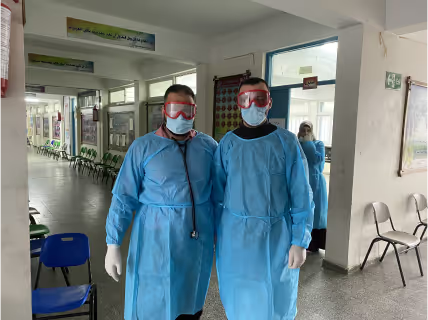Communicating Technical Evidence: supporting people making decisions about shelter after disasters

Project overview
This project takes a fresh look at the collection and communication of evidence about hazards, damage and needs after disasters.
Project solution
This project offers [specific solution or intervention] to tackle [challenge]. By implementing [strategies, tools, or innovations], the project aims to achieve [desired outcomes]. The approach is designed to [specific actions or methods] to bring about meaningful change in [community, region, or issue area].
Expected outcomes
This project aims to achieve [specific outcomes], such as [measurable results, improvements, or changes]. The expected impact includes [benefits to the target community, advancements in research or innovation, or long-term effects]. By the end of the project, we anticipate [specific changes or milestones] that will contribute to [broader goals or objectives].
WHAT IS THE HUMANITARIAN NEED?
People are affected by disasters in different ways. Humanitarian shelter organisations try to respond with a range of options to achieve the best match with what people need to survive and what they might want to do next.
In the rush to help, however, it is difficult to be quick, cover a large population and provide different types of support. This is all happening in the face of dramatic evidence that the ways people went about building before the disaster made their homes extremely vulnerable. This often means that there is less enthusiasm for the types of support that enable people to lead their own recovery by fixing up their own temporary shelter, repairing their dwelling or even rebuilding as quickly as they would like.
Humanitarian organisations able to find ways to support these activities have an opportunity to expand the range and scale of shelter available after disasters. Alternative support that can be scaled up quickly, based on sharing technical information more effectively, includes mass communication to households, technical advice and training for builders and modest financial support to help people get started.
The challenge is how to combine humanitarian resources with technical evidence so that alternative shelter support, led by affected families, can be developed rapidly after a disaster.
WHAT IS THE INNOVATIVE SOLUTION?
There are regular calls for humanitarian, academic and private sector organisations to join forces to improve the humanitarian shelter response. This project takes the next step by bringing these people together in “peace time” to look at exactly how this could happen in an emergency.
Added Value: Technical evidence at the right time, addressed to the right audience in a digestible form is valuable but difficult to find. This project pushes engineers, scientists and humanitarians, who don’t necessarily know what they don’t know and traditionally find themselves working separately after a disaster, to work out realistic ways to combine their work to make it more than the sum of its parts. The value does not come from injecting technical solutions but from working together to tailor support to the priorities of disaster affected people and communicate useful information.
WHAT ARE THE EXPECTED OUTCOMES?
- Document review of previous recommendations on humanitarian/private sector/academic collaboration. Impact: force the consortium team go further than agreeing that it is a good idea by looking at how it might happen.
- Briefing on the State of the Art aimed at humanitarian decision-makers and potential commercial or academic partners.
Impact: the process necessary to come up with this document educates individual engineers and scientists on the reality of humanitarian response and individual humanitarian decision-makers on the scope of services available in the private sector.
Impact: the product of this process communicates to a broader constituency the messages from the work using clear language or simple pictures. - Terms of Reference capturing ways forward for the sector aimed at donors.
Impact: initiates a project to implement this work with a wider group of agencies frequently tasked with communication and co-ordination - Project report: an account of the process, products and learning.
Project delivery & updates
Stay up to date with the latest developments from this project. Here, you will find details on what has been delivered, resources created, and regular updates as the project progresses. Access key documents, reports, and other materials to see how the project is making an impact.

